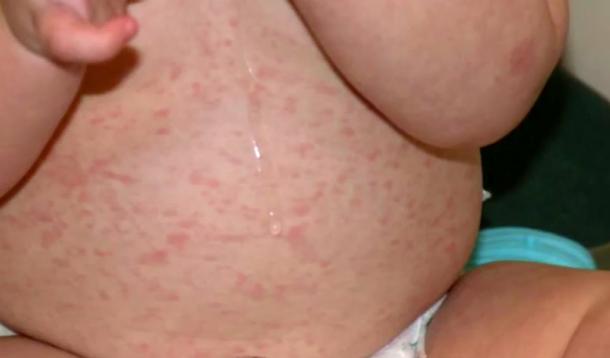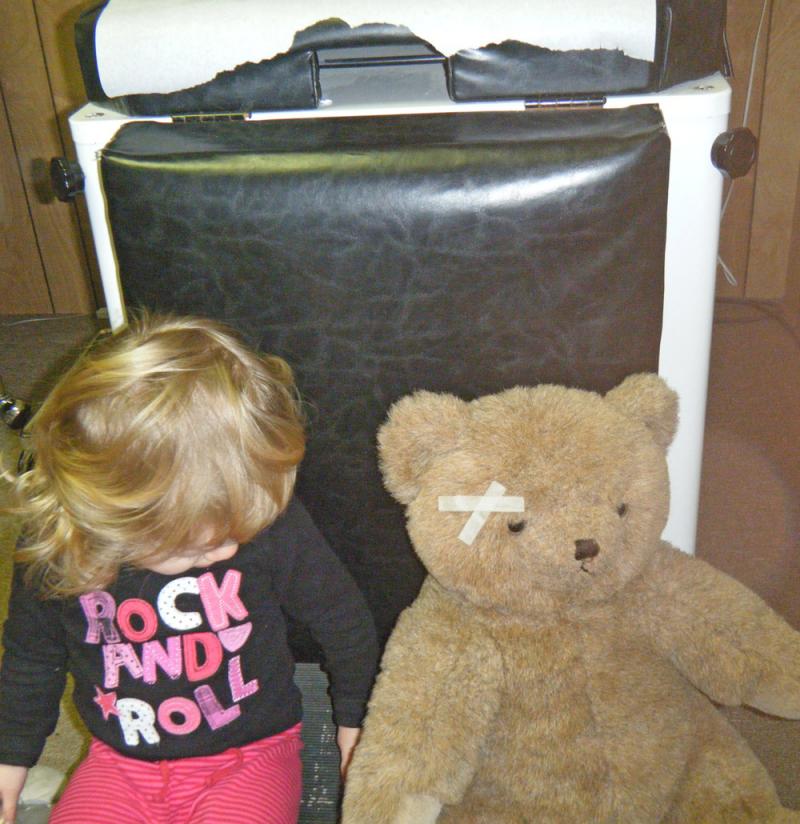
“Don’t let her touch anything!”
The words fell out of my mouth as I nervously watched my husband walk through the Emergency Room doors out into the hospital proper, hand in hand with our two year-old daughter. She was getting restless and he thought a wander might be in order.
Our family was in a city hospital waiting to find out why my uncle had been brought in by ambulance and I was more than a little nervous to have my curious toddler climbing on chairs which (obviously) were crawling with germs. My heart raced as I scanned the room trying to determine what each of the patients might be suffering from. Ringworm. Rotovirus. Malaria. Really, anything and everything was possible as far as I was concerned.
Especially diarrhea.
Soon after, we learned the doctors didn’t know what was up with my mom’s brother, so the lot of us went home with instructions to return at a later date for follow up tests.
Just over a week later, my husband, kiddo and I went out for breakfast at a downtown café after dropping my mom and her brother off at the hospital.* After ordering my daughter a kid-sized omelet and a fruit plate (her favourites), we watched in amazement as she played with her cutlery, while completely ignoring her food.
Understand, this was a kid who required a full cooler of snacks in order to travel from our home to the library, located one block away. And this same kid, after being taught sign language, used the “more” and “crackers” signs almost nonstop. For her to turn her nose up at food was like a lion saying no to raw meat or like me pushing away a chocolate bar.
Warning bells.
Aside from the odd sniffle and a brief bout with the trots, my little girl had made it to her second birthday without being sick. But our luck was about to change because the fever arrived later that day.
It was high. Really high. But once under control – with the help of children’s acetaminophen – my daughter happily played with her toys while I waited for a sore throat, runny nose or cough to arrive. But nothing happened. She even ate some supper.
The next day I was torn. With the fever under control, I vacillated. Should I take my toddler to our family doctor or relax at home while enjoying her Zen-like vibes? On day three, just as I began to second-guess my decision not to seek medical help, the fever disappeared without a trace.
Poof!
All was well until the next morning when my smiling, happy daughter lifted her shirt to expose a rash-covered torso with spots making a mad dash up her neck and down her thighs right before my eyes.
Then I noticed her puffy eyes as she giggled and sucked on the ears of her stuffed toy lamb.
I grabbed my copy of What To Expect The Toddler Years and made the regrettable decision to turn on my computer, which is when I discovered that you should never EVER type the word “rash” into Google Images.
I raced to the kitchen to grab a glass because someone somewhere online said I should. I pressed that glass against the spots on my child’s skin thinking it would shed some light.
It didn’t.
Was it a heat rash? Was it the measles? What the hell was going on???!
Shortly after in the medical clinic, our family doctor examined my two-year old and told us she had roseola, one of the most common early childhood illnesses (next to the common cold). Since she was at the tail end of the virus, and because her rash was not causing her any discomfort, the only recommendation was to keep on keeping on, while making sure she had plenty of liquids and ample rest.

Sure enough, the rash disappeared in a day or two and life carried on as normal.
Remarkably, none of my daughter’s playgroup mates contracted the virus. In fact, none of my mom friends had even heard of it, much less dealt with it, which is too bad because as illnesses go, it’s a pretty decent one to catch.
Roseola – also known as Sixth Disease - is a HIGHLY CONTAGIOUS childhood virus characterized by a sudden high fever (lasting from a couple of days to a week). The fever ends abruptly and is then often followed by a rash. It can also cause puffy eyes, irritability, lack of appetite and loose stools.
Two common, closely related viruses can cause roseola: Human herpes virus (HHV) type 6 and type 7. These viruses belong to the same family as the better-known herpes simplex viruses (HSV), but do not cause the cold sores and genital herpes infections that HSV can cause.

The rash of roseola develops once the fever has resolved and the child no longer appears ill. The pinkish-red spots will turn white when you touch them and they might have a lighter ring around them. The rash usually spreads to the neck, face, arms, and legs and can last from a couple of hours to up to two days. It is usually not itchy.
Roseola typically resolves itself on its own. Medication to reduce the fever is generally prescribed as is rest and plenty of liquids.
It can take a week or two from when a child is infected with the virus, until her symptoms develop. That was certainly true in our case. Damn that hospital ER!
For more information about Roseola, watch this video from Dr. Dina.
Roseola image(s): Dr Dina Kulik, YouTube
*My uncle was fine :)
Please note: The information presented here should not be used in order to diagnose illness. Always seek appropriate medical care and meet with your doctor in person.